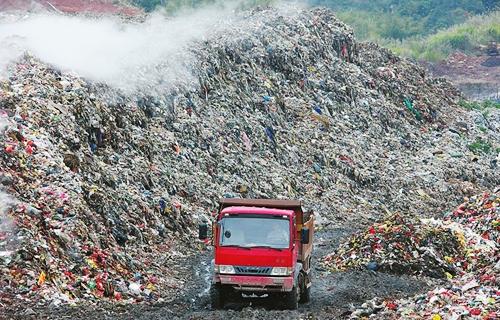The main components of municipal solid waste include kitchen waste, waste paper, waste plastics, waste fabrics, waste metal, waste glass and ceramic fragments, brick and tile residue, waste batteries, waste household appliances, etc. They mainly come from urban households, urban commerce, catering industry, Hotel industry, tourism, service industry, municipal sanitation industry, transportation industry, street cleaning garbage, construction waste, culture and education. Sanitation and administrative institutions, industrial enterprises, sewage sludge treatment and other scattered garbage (Note: The garbage treatment system developed by Luoyang Building Materials Architectural Design Research and Development can cover the above-mentioned various types of garbage and dispose of them).
The main factors affecting the composition of municipal solid waste are the quality of life and habits of residents, season, climate and so on. Municipal solid waste (MSW) comes mostly from residents’living and consumption, municipal construction and maintenance, commercial activities, urban landscaping and suburban farming, production, medical treatment and tourism and entertainment places, including general garbage, kitchen waste of human and animal manure, sludge, garbage residue and dust. Regarding the factors mentioned above, it is usually recommended to find a professional company to dispose of the waste. Luoyang Building Material Architectural Design and Research Institute is a professional research institute, which has made a long-term in-depth research and engineering development on garbage gasification and power generation technology. The garbage gasification technology developed now has the characteristics of high efficiency and continuity, gas De-Coking and purification, automatic control of one-key operation, strong adaptability, modular design, zero emission and waste heat utilization. It is one of the earliest professional research institutes in China.
Municipal solid waste (MSW) is produced in large quantities and is increasing rapidly. The main sources of MSW are listed in Table 1-1. Statistics show that the production of municipal solid waste is directly proportional to the size of the city, the growth rate of the population and the living standard of the city residents. In different regions, the composition of municipal solid waste is different due to the unbalanced development of industry, the different degree of urban modernization, and the influence of habits, but it can be divided into inorganic and organic substances in general. Detailed classification can be found in Table 1-2.
Table 1-1 Composition Sources of Municipal Solid Waste
| Sources of municipal solid waste | Composition of municipal solid waste |
| Resident Life | Food garbage, waste paper, glass, metal, plastic porcelains, ash, plants, electricity, yellow stool, miscellaneous soil, etc. |
| Commercial and municipal office | Ditto. There are also building materials waste, flammable, infectious, radioactive waste, automobiles, tires, batteries, electrical appliances, appliances, etc. |
| City Slope Construction and Maintenance | Dirty soil, debris, branches and leaves, dead agricultural sticks, vegetables, fruits, weeds, stools, dead livestock, etc. |
| Medical treatment | Metals, radioactive materials, dust, sludge, building materials for appliances, cotton yarn, etc. |
Table 1-2 Urban Domestic Waste Classification Table
| Classification of Municipal Domestic Waste | Item | Composition of Municipal Solid Waste |
| Inorganic substances | Glass | Fragments, bottles, tubes, mirrors, instruments, balls, toys, etc. |
| Metal | Fragments, wire, cans, parts, toys, pots, etc. | |
| Brick and tile | Stones, tiles, cement blocks, cylinders, porcelains, lime flakes | |
| Organic compound | stove ash | Slag, dust, etc |
| Other | Waste electric filtration, gypsum, etc. | |
| Plastic | Films, bottles, tubes, bags, toy shoes, tapes, wheels, etc. | |
| Papel type | Packing cartons, stationery, toilet paper, newspapers, cigarette paper, etc. | |
| Fibers type | Worn clothes, cloth shoes, etc | |
| Organic compound | Vegetables, fruits, animal corpses and hair, waste, bamboo and wood products, etc. |



